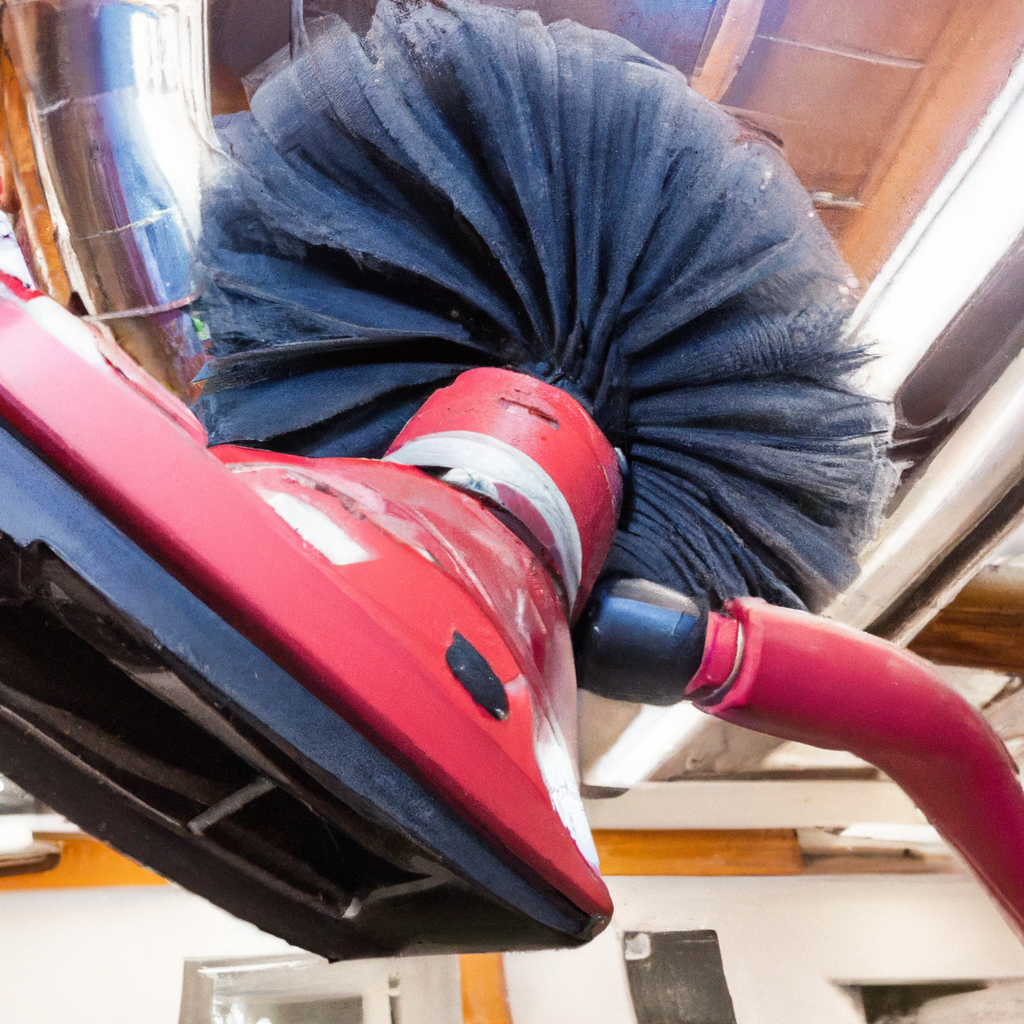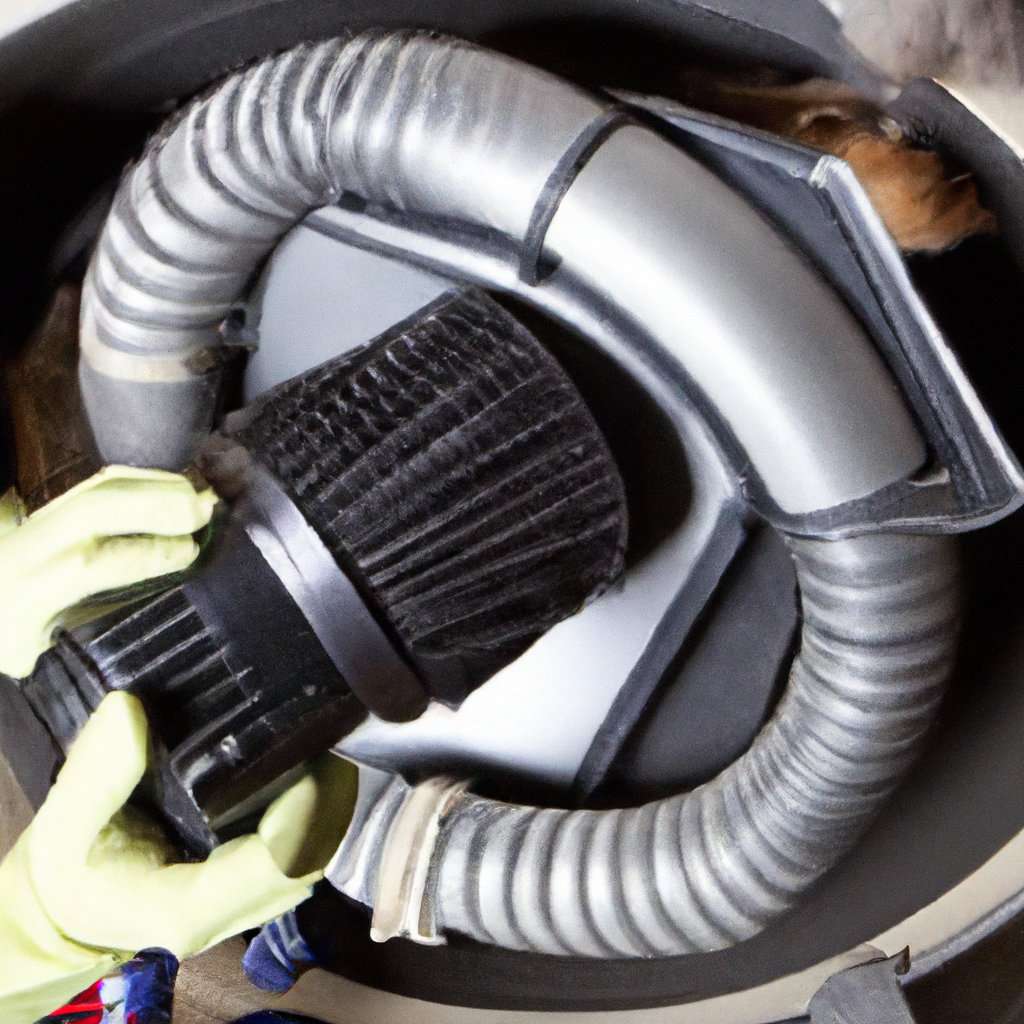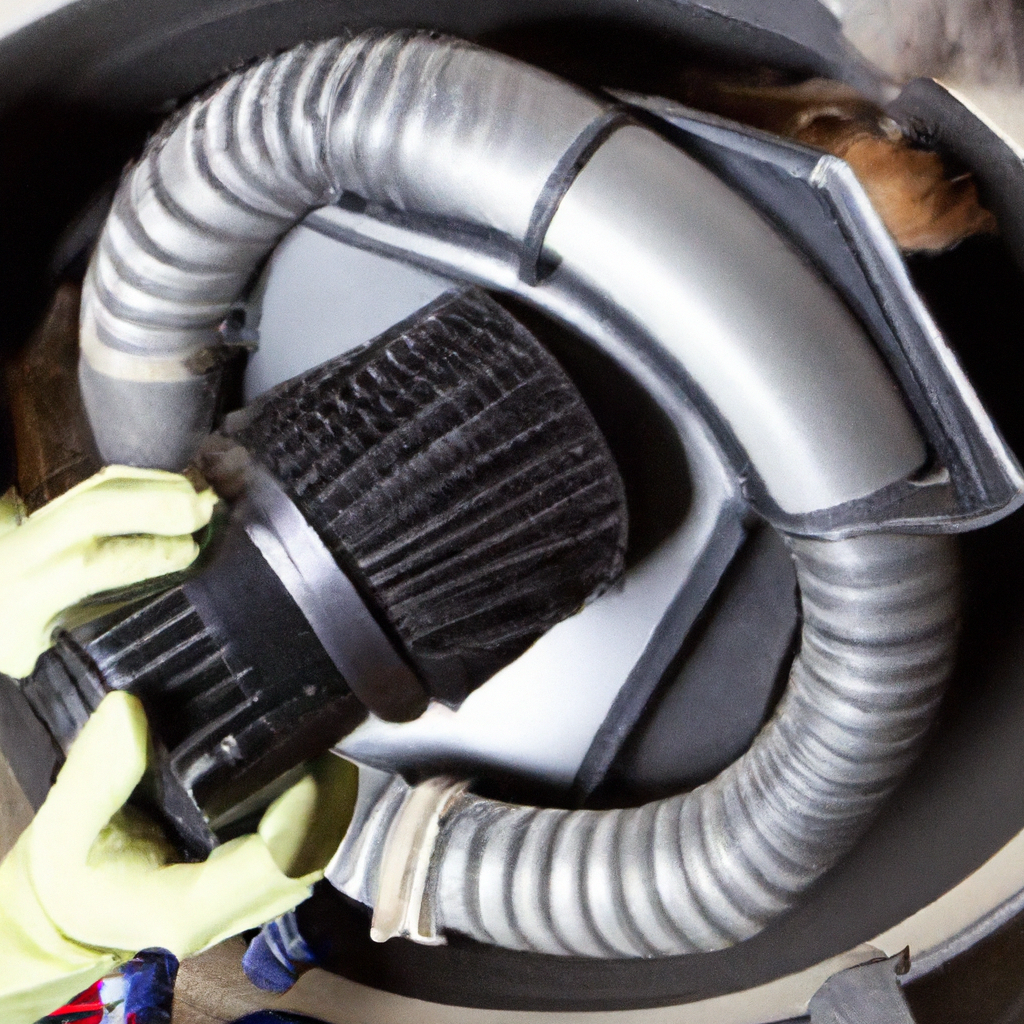Did you know that when it comes to duct cleaning, specialized equipment is often used? That’s right! In order to ensure a thorough and effective cleaning, professionals may utilize tools such as rotating brushes or high-powered vacuums. These advanced pieces of equipment are designed specifically for the task at hand, allowing for a deep clean that removes dust, debris, and other contaminants from your ductwork. So, if you’re looking to improve the air quality in your home or office, duct cleaning with specialized equipment may be just what you need!
1. Overview
Duct cleaning is an essential maintenance task that is often overlooked by homeowners and businesses alike. However, it plays a crucial role in maintaining indoor air quality and ensuring the efficient operation of HVAC systems. In this article, we will explore the importance of duct cleaning, the common equipment used in the process, and the numerous benefits of hiring professional duct cleaning services.
2. Types of Duct Cleaning Equipment
2.1 Rotating Brushes
Rotating brushes are one of the most commonly used equipment in duct cleaning. These brushes are designed to effectively remove dirt, dust, and debris from the surfaces of the ductwork. They are typically attached to long flexible rods that allow them to reach even the most inaccessible areas of the duct system.
2.2 High-powered Vacuums
High-powered vacuums are another essential tool in the duct cleaning process. These advanced vacuums have powerful suction capabilities, allowing them to extract large amounts of dust and debris from the ductwork. They are equipped with HEPA filters that capture even the smallest particles, ensuring that the air released back into the environment is clean and contaminant-free.
2.3 Air Whips
Air whips are specialized tools designed to agitate and dislodge stubborn debris that may cling to the internal surfaces of the ducts. They use compressed air to create a whipping motion, effectively loosening and removing dirt and debris. Air whips are particularly useful for cleaning hard-to-reach areas and ensuring a thorough cleaning process.
2.4 Compressed Air Devices
Compressed air devices are highly versatile tools that assist in dislodging and removing dirt and debris from the ductwork. These devices use compressed air to create a high-pressure stream of air, which effectively blows away dust and dirt from the internal surfaces of the ducts. Compressed air devices are often used in combination with other equipment for a comprehensive cleaning process.
2.5 Agitation Devices
Agitation devices are specifically designed to agitate and dislodge dirt and debris from the surfaces of the ductwork. They utilize various mechanisms, such as rotating brushes or air pressure, to loosen and remove contaminants. Agitation devices are especially beneficial for cleaning heavily soiled ducts or ducts with stubborn debris buildup.

3. Rotating Brushes
3.1 Purpose of Rotating Brushes
The main purpose of rotating brushes in duct cleaning is to physically remove dirt, dust, and debris from the internal surfaces of the ductwork. These brushes are designed with bristles that effectively scrub away contaminants, ensuring a thorough cleaning process.
3.2 How Rotating Brushes Work
When the rotating brushes are inserted into the ductwork, they are connected to a powerful motor that spins the brushes. As the brushes rotate, the bristles come into contact with the surfaces of the ducts, dislodging and loosening dirt and debris. The rotation of the brushes combined with the suction power of the vacuum ensures that all contaminants are effectively removed from the duct system.
3.3 Appropriate Situations for Using Rotating Brushes
Rotating brushes are particularly useful in situations where there is heavy dirt and debris buildup within the duct system. They are effective in removing stubborn contaminants that may be clinging to the surfaces of the ductwork. Rotating brushes are also ideal for reaching tight corners, bends, and other hard-to-access areas, ensuring a thorough cleaning process.
4. High-powered Vacuums
4.1 Role of High-powered Vacuums
High-powered vacuums play a crucial role in the duct cleaning process by effectively removing the dislodged dirt, dust, and debris from the ductwork. These vacuums have powerful suction capabilities, allowing them to extract even the smallest particles and contaminants from the duct system.
4.2 How High-powered Vacuums Operate
High-powered vacuums are equipped with strong motors and high-efficiency particulate air (HEPA) filters. The motor generates a powerful suction force, pulling the dislodged contaminants into the vacuum cleaner. The HEPA filters then trap the particles, preventing them from being released back into the air.
4.3 Advantages of Using High-powered Vacuums
The use of high-powered vacuums in duct cleaning provides several advantages. Firstly, their strong suction power ensures a thorough removal of dirt and debris, resulting in cleaner ducts. Secondly, the HEPA filters help improve indoor air quality by capturing even the smallest particles, including allergens and dust. Lastly, the efficient operation of high-powered vacuums ensures that the cleaning process is completed in a timely manner.

5. Air Whips
5.1 Function of Air Whips in Duct Cleaning
Air whips are specifically designed to agitate and dislodge stubborn dirt and debris from the internal surfaces of the ductwork. They create a whipping motion using compressed air, effectively loosening contaminants and allowing for their removal during the cleaning process.
5.2 Mechanism of Air Whips
Air whips work by attaching a hose connected to a high-pressure air source to the whip head. When the compressed air is released, it creates a whipping motion that agitates and loosens the dirt and debris within the ducts. The loosened contaminants can then be easily extracted using high-powered vacuums or other cleaning equipment.
5.3 When to Use Air Whips
Air whips are particularly useful when dealing with heavily soiled ducts or ducts with stubborn debris buildup. They are effective in tackling hard-to-reach areas and dislodging contaminants that may cling to the internal surfaces of the ductwork. Air whips are often used as a complementary tool in conjunction with other equipment to ensure a comprehensive cleaning process.
6. Compressed Air Devices
6.1 Importance of Compressed Air in Duct Cleaning
Compressed air devices play a vital role in duct cleaning by providing a high-pressure stream of air that effectively blows away dirt and debris from the internal surfaces of the ductwork. This helps to dislodge and remove contaminants, ensuring a thorough cleaning process.
6.2 Operation of Compressed Air Devices
Compressed air devices operate by utilizing compressed air that is released through a nozzle or attachment. The high-pressure air creates a force that blows away dirt and debris from the surfaces of the ducts. The use of compressed air devices in conjunction with other cleaning equipment enhances the effectiveness of the cleaning process.
6.3 Suitable Applications for Compressed Air Devices
Compressed air devices are suitable for a wide range of applications in duct cleaning. They are particularly useful for removing loose dirt and debris that may be present within the duct system. Compressed air devices are often used in combination with brushes or agitation devices to dislodge contaminants and ensure a thorough cleaning process.
7. Agitation Devices
7.1 Role of Agitation Devices
Agitation devices are essential tools in the duct cleaning process as they aid in dislodging dirt, dust, and debris from the internal surfaces of the ductwork. They create mechanical agitation, effectively loosening contaminants and allowing for their removal during the cleaning process.
7.2 How Agitation Devices Work
Agitation devices work by utilizing various mechanisms, such as rotating brushes or air pressure, to agitate and dislodge contaminants within the ducts. The mechanical agitation helps to loosen debris, making it easier to remove during the cleaning process. Agitation devices are often used in conjunction with other cleaning equipment to ensure a thorough cleaning process.
7.3 Specific Scenarios for Using Agitation Devices
Agitation devices are particularly useful in specific scenarios, such as when dealing with heavily soiled ducts or ducts with stubborn debris buildup. They are effective in dislodging contaminants that may be tightly adhered to the surfaces of the ductwork. Agitation devices are also beneficial for cleaning ducts in commercial or industrial settings where there may be a higher concentration of pollutants.
8. Benefits of Professional Duct Cleaning
8.1 Enhanced Air Quality
One of the primary benefits of professional duct cleaning is the improvement of indoor air quality. Over time, ductwork can accumulate dirt, dust, allergens, and other pollutants, which can negatively impact the air you breathe. Professional duct cleaning removes these contaminants, ensuring that the air circulating through the ducts is clean and healthy.
8.2 Improved Energy Efficiency
Clean and well-maintained ductwork can contribute to improved energy efficiency within your HVAC system. When ducts are clogged with dirt and debris, it restricts the airflow, causing the system to work harder and consume more energy. Professional duct cleaning removes this buildup, allowing the air to flow freely and reducing the strain on your heating and cooling system.
8.3 Prevention of Mold and Mildew Growth
Ductwork that is neglected and left uncleaned can provide a suitable environment for mold and mildew to thrive. These growths can not only affect the air quality but also pose potential health risks. Professional duct cleaning eliminates the sources of mold and mildew, preventing their growth and ensuring a healthier indoor environment.
8.4 Removal of Odors
Over time, ductwork can become a breeding ground for unpleasant odors caused by accumulated dirt, dust, pet dander, and other contaminants. These odors can be circulated throughout your home or business, impacting the overall indoor environment. Professional duct cleaning effectively removes the sources of these odors, leaving your space smelling fresh and clean.
8.5 Elimination of Allergens and Dust
Ductwork can harbor allergens, dust, and other microscopic particles that can trigger allergic reactions and respiratory issues. Professional duct cleaning removes these contaminants, reducing the allergic triggers present in the indoor air. This is particularly beneficial for individuals with allergies, asthma, or other respiratory conditions.
8.6 Extended Lifespan of HVAC System
Regular professional duct cleaning can help extend the lifespan of your HVAC system. When ducts are clean and free from debris, it reduces the strain on the system, allowing it to operate more efficiently and effectively. This can result in fewer repairs and a longer lifespan for your heating and cooling equipment.
8.7 Cost Savings in the Long Run
Investing in professional duct cleaning can lead to cost savings in the long run. A clean and well-maintained HVAC system operates more efficiently, reducing energy consumption and lowering utility bills. Additionally, regular duct cleaning can prevent costly repairs or replacements that may be necessary due to neglect or damage caused by excessive dirt and debris buildup.
8.8 Peace of Mind
Knowing that your ductwork is clean and functioning properly can provide you with peace of mind. By hiring professional duct cleaning services, you can be confident that your indoor air quality is improved, your HVAC system is operating efficiently, and potential health risks are minimized. This peace of mind allows you to focus on other aspects of your home or business, knowing that you have taken steps to ensure a clean and healthy environment.
9. DIY vs Professional Duct Cleaning
9.1 Pros and Cons of DIY Duct Cleaning
DIY duct cleaning may seem like a cost-effective option, but it has its pros and cons. The main advantage of DIY duct cleaning is the potential cost savings. However, it is essential to consider the limitations of DIY cleaning methods. Without the proper equipment and expertise, it can be challenging to achieve the same level of thoroughness and effectiveness as professional duct cleaning services. DIY cleaning may also pose risks, such as damaging the ductwork or releasing contaminants into the air if not done correctly.
9.2 Advantages and Disadvantages of Professional Duct Cleaning
Professional duct cleaning offers numerous advantages over DIY cleaning. The primary advantage is the expertise and experience that professionals bring to the job. They have the knowledge, skills, and specialized equipment to thoroughly clean the ductwork and ensure optimal results. Professional duct cleaning also saves time and effort, as the entire process is handled by trained technicians. However, one potential disadvantage of professional duct cleaning is the cost associated with hiring professional services. It is important to weigh the benefits against the investment and consider the long-term impact on indoor air quality and HVAC system performance.
9.3 Factors to Consider When Deciding Between DIY and Professional Services
When deciding between DIY and professional duct cleaning, several factors should be considered. The complexity of the duct system, the level of contamination, and the availability of tools and equipment are essential considerations. DIY cleaning may be suitable for simple systems with minimal contamination. However, for larger or more complex systems, or for situations where significant cleaning is required, professional services are recommended. It is also important to assess personal skill level, time constraints, and the potential risks associated with DIY cleaning. Considering these factors can help you make an informed decision on the best approach for your specific duct cleaning needs.
10. Conclusion
Regular duct cleaning is a vital maintenance task that should not be overlooked. The use of specialized equipment, such as rotating brushes, high-powered vacuums, air whips, compressed air devices, and agitation devices, ensures a thorough cleaning process that improves indoor air quality and HVAC system efficiency. Professional duct cleaning offers numerous benefits, including enhanced air quality, improved energy efficiency, prevention of mold and mildew growth, removal of odors, elimination of allergens and dust, extended HVAC system lifespan, cost savings, and peace of mind. While DIY duct cleaning may be an option for simple systems, professional services provide the expertise, equipment, and time-saving convenience necessary for comprehensive cleaning. By prioritizing regular duct cleaning and considering the factors involved in selecting the right cleaning approach, you can maintain clean and efficient ductwork, contributing to a healthier and more comfortable indoor environment.

